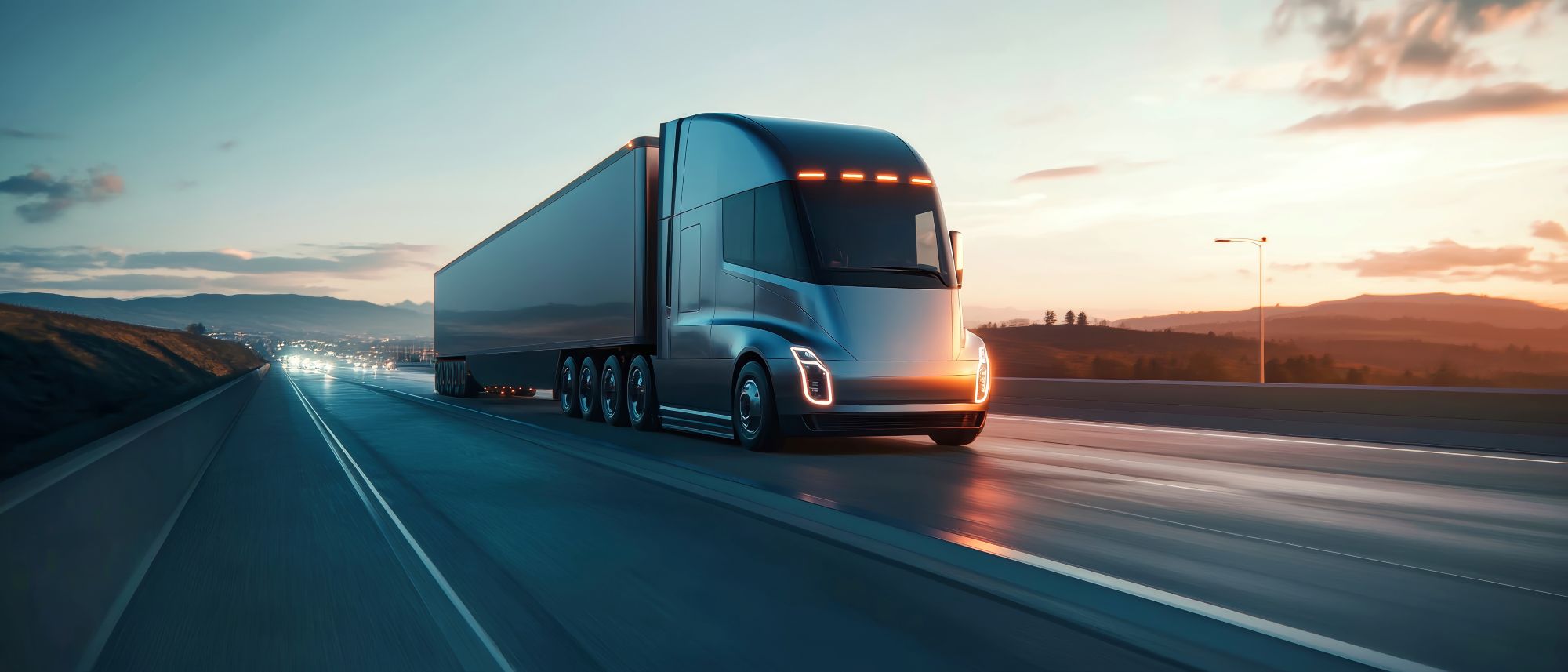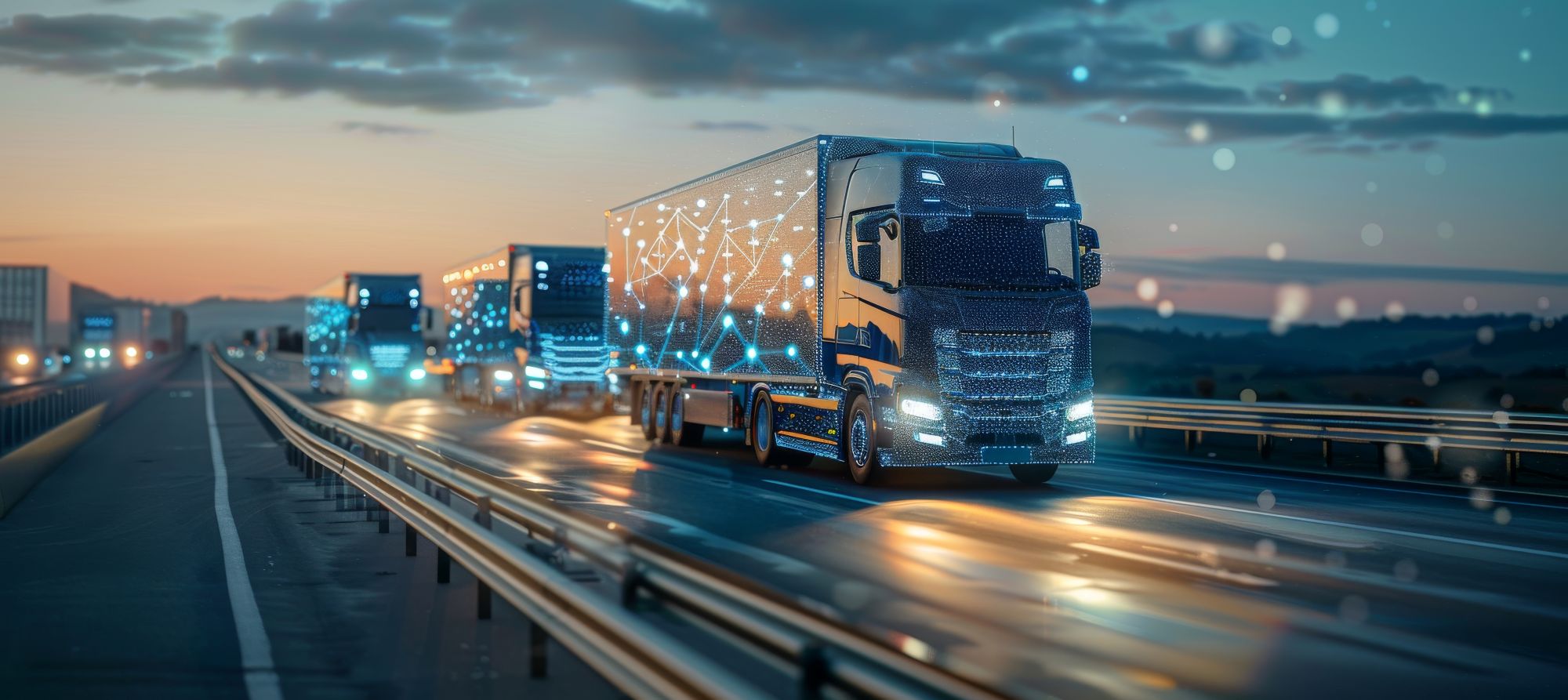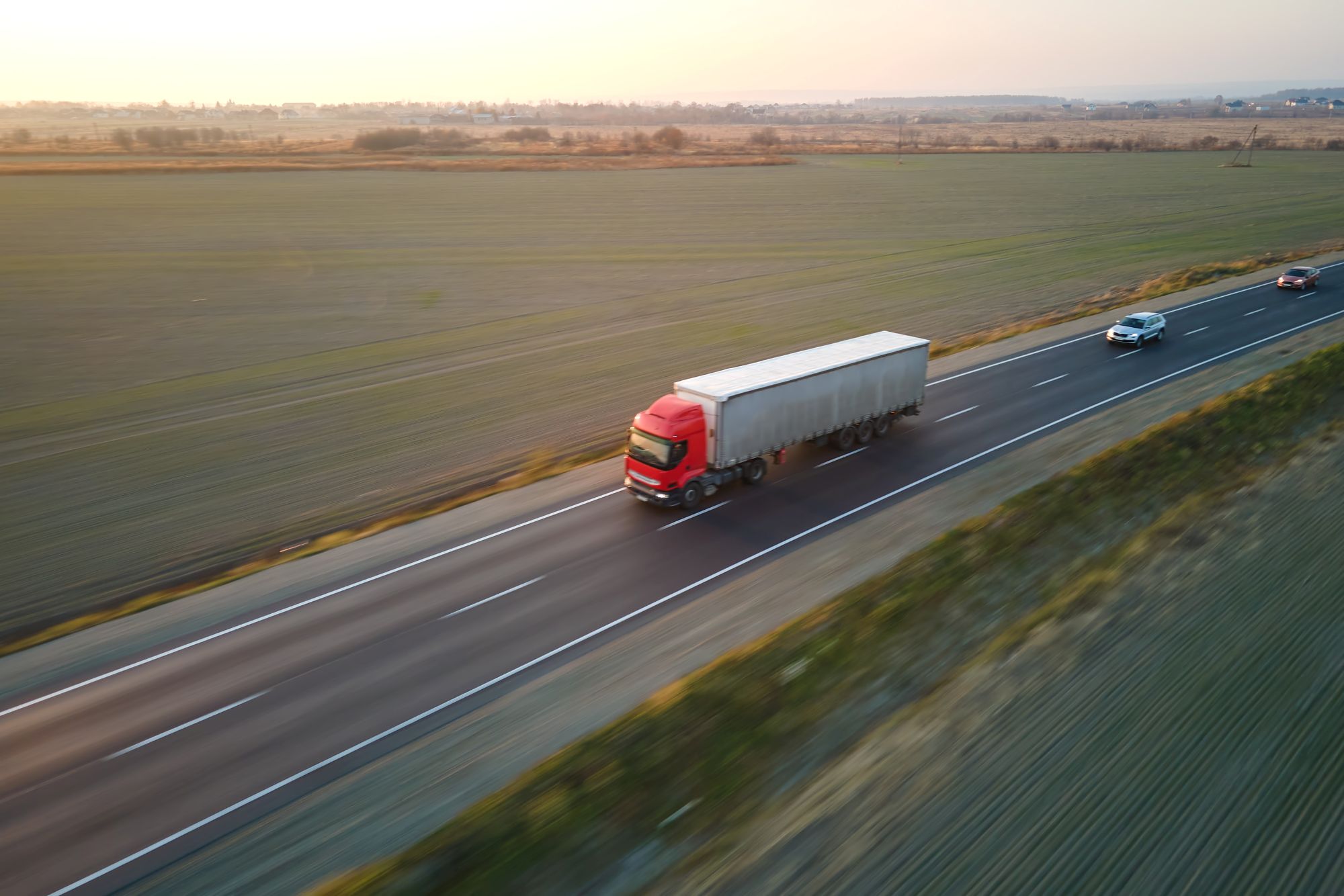
Guest
Les flottes s'orientent-elles vers l'intégration de véhicules autonomes ?
Créée: 28/08/2025
•
Mise à jour : 28/08/2025
L'engouement pour les voitures autonomes n'est plus aussi fort qu'auparavant, mais il reste un bruit constant dans les oreilles des gestionnaires de flotte. Le gouvernement britannique a repoussé à 2026 les plans pilotes d'intégration des véhicules autonomes, ravivant ainsi l'intérêt pour cette technologie. Les décideurs ignoreront-ils le bruit ou adopteront-ils rapidement cette technologie ?
Qu'est-ce que l'intégration des véhicules autonomes ?
L'intégration des véhicules autonomes consiste à intégrer dans les flottes commerciales des technologies de conduite autonome telles que l'intelligence artificielle, la détection et la télémétrie par ondes lumineuses (LiDAR) et les caméras haute définition. À plus grande échelle, il s'agit d'introduire des voitures autonomes dans les systèmes de transport public existants.
Les systèmes d'aide à la conduite comprennent la prévention des collisions, l'ajustement automatique de la vitesse, le centrage sur la voie, le régulateur de vitesse adaptatif et le covoiturage intelligent. L'automatisation partielle et conditionnelle s'appuie sur des technologies plus avancées pour permettre la conduite mains libres dans certaines circonstances.
L'automatisation de niveau 4 et 5 est une priorité absolue pour les constructeurs automobiles, mais elle est difficile à mettre en œuvre dans la pratique, car les ingénieurs doivent tenir compte d'innombrables cas de figure. Même avec une IA avancée, il peut être difficile de perfectionner le stationnement et de prévenir les collisions. Que se passe-t-il si les marquages au sol sont à peine visibles ou si un enfant se précipite sur la route ? L'adoption dépend de la réaction de la voiture.
Les flottes sont-elles en train de passer à l'intégration de véhicules autonomes ?
Selon le Centre for Connected & Autonomous Vehicles, la ministre des transports, Heidi Alexander, a confirmé que le gouvernement britannique allait accélérer les projets pilotes commerciaux de conduite autonome et viser le printemps 2026. Cette initiative pourrait [créer près de 40 000 emplois] (https://www.gov.uk/government/news/driving-innovation-38000-jobs-on-the-horizon-as-pilots-of-self-driving-vehicles-fast-tracked) et ajouter 42 milliards de livres à l'économie britannique d'ici 2035.
La nouvelle législation du pays sur les véhicules automatisés est l'une des plus robustes au monde, jetant les bases d'une adoption commerciale généralisée. La maturité technologique est le seul obstacle qui subsiste.
Dans un entretien avec McKinsey & Company, Sascha Meyer, PDG de l'entreprise allemande de technologie automobile MOIA, a déclaré qu'il était difficile de prévoir les délais d'intégration des véhicules autonomes. En 2016, son entreprise MOIA [pensait que les véhicules sans conducteur allaient proliférer] (https://www.mckinsey.com/industries/automotive-and-assembly/our-insights/autonomous-vehicles-the-future-of-european-transport) dans toute l'Europe d'ici 2021.
Depuis, M. Meyer s'est rendu compte que l'adoption d'un tel système nécessitait la conception d'un écosystème complet, et pas seulement des fonctions de conduite. Le nouveau calendrier prévoit la présence de voitures autonomes dans les villes européennes d'ici 2030 au plus tôt. Les ingénieurs de MOIA conçoivent le prototype de manière à ce qu'il dépasse les redondances obligatoires. De cette manière, ils seront prêts à fonctionner commercialement dès que la législation pertinente sera adoptée.
Facteurs favorisant l'adoption des véhicules sans conducteur
Les flottes de véhicules de livraison, de taxis, de véhicules utilitaires et de véhicules commerciaux sont de plus en plus équipées de systèmes d'aide à la conduite et d'automatisation intelligente. Toutefois, le taux de pénétration reste relativement faible, surtout si l'on considère l'ancienneté de la technologie. Quels sont leurs projets en matière d'autonomie ?
L'efficacité accrue est l'une des principales raisons pour lesquelles les gestionnaires de flotte adoptent l'automatisation. Contrairement aux humains, les camionnettes sans conducteur peuvent fonctionner 24 heures sur 24. Grâce aux systèmes télématiques, ils peuvent optimiser la conduite et minimiser les temps morts afin d'améliorer le rendement énergétique et d'accélérer les déplacements.
L'IA est immunisée contre l'erreur humaine, éliminant les freinages brusques et la distraction au volant. Elle ne peut pas se fatiguer et n'a pas d'angle mort. Ces améliorations pourraient contribuer à réduire les collisions routières et les accidents de voiture, ce qui permettrait d'atténuer les coûteuses demandes d'indemnisation des travailleurs et de diminuer les frais d'assurance.
Les économies de coûts sont un autre facteur contributif. Aux niveaux 4 et 5, les propriétaires peuvent optimiser les dépenses de main-d'œuvre et compenser les pénuries de conducteurs. En outre, les voitures électriques sans conducteur dotées d'une capacité de connexion au réseau peuvent [réduire les coûts d'exploitation de près de 20 %] (https://www.sciencedirect.com/science/article/abs/pii/S0306261921008850) sur une période de 30 ans, ce qui permet de compenser l'investissement initial.

Facteurs retardant l'adoption des véhicules sans conducteur
Outre le fait qu'ils attendent que la technologie sans conducteur arrive à maturité, les propriétaires de flottes retardent l'adoption en raison des coûts initiaux élevés. L'intégration du LiDAR, de l'IA et de la télématique dans chaque camion est coûteuse. L'achat de nouveaux véhicules au lieu d'une modernisation est tout aussi coûteux. Même s'il est possible de réaliser des économies, la technologie évolue rapidement et l'investissement risque d'être vite dépassé.
La sécurité est une autre préoccupation. Les capteurs à œil photoélectrique [font partie de l'équipement standard de la plupart des portes de garage modernes] (https://www.qualitydoorcompany.com/blog/garage-door-maintenance-guide/). Ils empêchent la porte de se refermer sur des objets, des voitures ou des personnes. Ils empêchent la porte de se refermer sur des objets, des voitures ou des personnes, et sont utilisés dans toute l'industrie, dans les stations de lavage et les chaînes de montage automobile. Si certains constructeurs automobiles utilisent uniquement des systèmes de caméras, les ingénieurs ont dû trouver de nouvelles solutions. Aujourd'hui, beaucoup utilisent le LiDAR, les systèmes globaux de navigation par satellite et les capteurs à ultrasons.
Cependant, même les systèmes les plus avancés sont faillibles. Il ne suffit pas de rendre les voitures automatisées aussi performantes que les humains - elles doivent réussir là où les conducteurs humains échouent.
Les capteurs existent depuis des années, mais les ingénieurs ne les ont pas encore perfectionnés. Ils peuvent échouer dans des cas extrêmes ou des scénarios peu familiers. Les voitures de niveau 3 ne fonctionnent que sur des autoroutes à chaussées séparées et préétablies, par temps clair. Étant donné que le Royaume-Uni [a connu 150 jours de précipitations] (https://renovated.com/best-net-zero-energy-building-examples-from-around-the-globe/) en 2021, ils pourraient être trop peu fiables pour être adoptés à grande échelle.
Comment le Royaume-Uni peut se préparer aux véhicules autonomes
L'intégration des véhicules autonomes progresse peut-être lentement, mais elle est en bonne voie pour atteindre sa destination au cours de la prochaine décennie. Selon une étude de Goldman Sachs, [jusqu'à 10 % des nouvelles voitures] (https://www.goldmansachs.com/insights/articles/partially-autonomous-cars-forecast-to-comprise-10-percent-of-new-vehicle-sales-by-2030) vendues dans le monde pourraient être des véhicules de niveau 3 d'ici 2030. Elle prévoit que les véhicules de niveau 2 - ceux qui nécessitent une supervision du conducteur - passeront de 20 % des ventes en 2025 à 30 % en 2027.
Les gestionnaires doivent tenir compte de l'ampleur et du coût de l'intégration des flottes autonomes pour déterminer si une adoption précoce est la bonne solution pour eux. Elle se traduira probablement par des économies à long terme, mais il peut être plus gratifiant d'attendre, car cela laisse le temps de faire évoluer la technologie. Si l'analyse coûts-avantages n'est pas convaincante, ils devraient envisager une mise à niveau progressive au fur et à mesure que les véhicules tombent en panne.
Ceux qui procèdent à l'adoption doivent élaborer des politiques d'exploitation, de stockage, de sécurité et de mise à niveau. Ces règles doivent varier en fonction du niveau d'automatisation. Par exemple, les conducteurs de camions de niveau 3 devraient être tenus de porter toute leur attention sur la route afin de prendre le contrôle si nécessaire.
Pour que la mise en œuvre soit réussie, il est essentiel d'informer les employés sur leur rôle. L'étude de Volkswagen Financial Services a révélé que [six personnes sur dix] (https://fleetworld.co.uk/majority-of-uk-drivers-say-theyre-better-than-autonomous-vehicles/) se considèrent comme de meilleurs conducteurs que les véhicules autonomes, et qu'il est donc peu probable qu'elles surestiment les capacités du système sans conducteur. Cependant, ils doivent recevoir une formation explicite sur les meilleures pratiques et les habitudes à éviter.
L'avenir de l'intégration des flottes autonomes au Royaume-Uni
Les machines autonomes sont à l'œuvre dans les ports et les entrepôts de toute l'Europe. L'automatisation des véhicules routiers est plus difficile car ils ne sont pas sur une voie fixe. Ils doivent également tenir compte de variables telles que les conditions météorologiques et les autres automobilistes. Le géofencing, la télématique et l'IA accélèrent l'adoption de ces solutions en rendant l'imprévisible prévisible. À tout le moins, ces solutions améliorent les temps de réponse et atténuent les erreurs humaines, démontrant que ces technologies, qui n'avaient pas encore fait leurs preuves, sont tout aussi capables que les automobilistes humains.
Pour l'instant, l'automatisation complète qui élimine le besoin d'attention humaine reste théorique. Cependant, la conduite mains libres est une réalité, et les systèmes sans conducteur pourraient bientôt devenir la norme dans les flottes commerciales. Alors que les constructeurs automobiles perfectionnent les fonctions de conduite, les propriétaires de flottes devraient donner la priorité à la cartographie des itinéraires, à la gestion des conducteurs et à la planification de la maintenance.

Découvrez-en plus sur Renovated Magazine.



